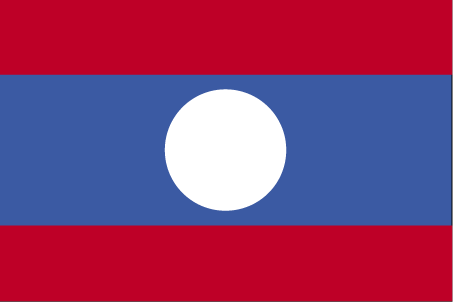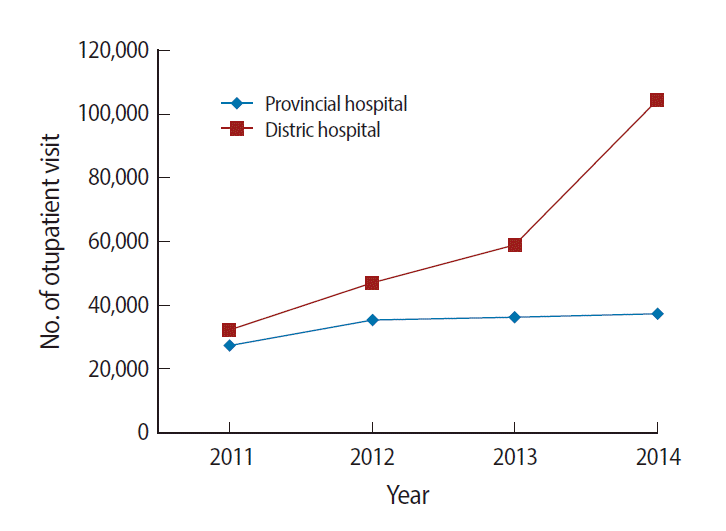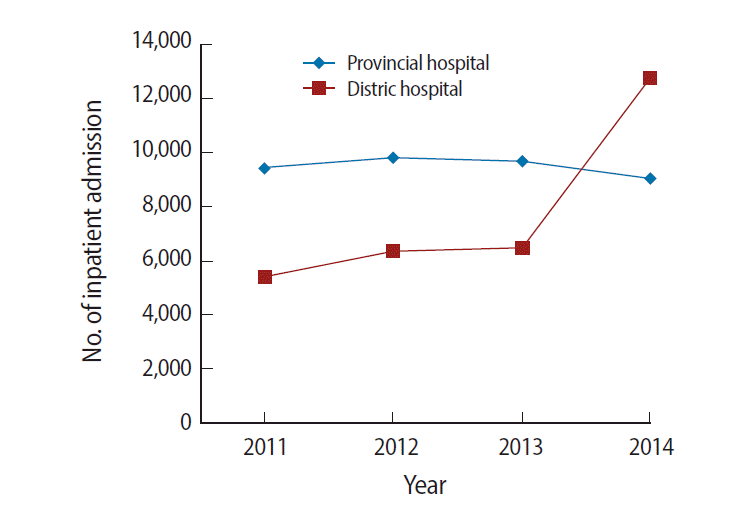Articles
- Page Path
- HOME > J Educ Eval Health Prof > Volume 13; 2016 > Article
-
Research article
Evaluation of a continuing professional development training program for physicians and physician assistants in hospitals in Laos based on the Kirkpatrick model -
Hyun Bae Yoon1
 , Jwa-Seop Shin1*
, Jwa-Seop Shin1* , Ketsomsouk Bouphavanh2
, Ketsomsouk Bouphavanh2 , Yu Min Kang3
, Yu Min Kang3
-
DOI: https://doi.org/10.3352/jeehp.2016.13.21
Published online: May 31, 2016
1Department of Medical Education, Seoul National University College of Medicine, Seoul, Korea
2Education Development Center, University of Health Sciences, Vientiane, Lao People’s Democratic Republic
3Center for Public Healthcare Education and Training, National Medical Center, Seoul, Korea
- *Corresponding email: hismed1@snu.ac.kr
© 2016, Korea Health Personnel Licensing Examination Institute
This is an open-access article distributed under the terms of the Creative Commons Attribution License, which permits unrestricted use, distribution, and reproduction in any medium, provided the original work is properly cited.
Abstract
-
Purpose:
- Medical professionals from Korea and Laos have been working together to develop a continuing professional development training program covering the major clinical fields of primary care. This study aimed to evaluate the effectiveness of the program from 2013 to 2014 using the Kirkpatrick model.
-
Methods:
- A questionnaire was used to evaluate the reaction of the trainees, and the trainers assessed the level of trainees’ performance at the beginning and the end of each clinical section. The transfer (behavioral change) of the trainees was evaluated through the review of medical records written by the trainees before and after the training program.
-
Results:
- The trainees were satisfied with the training program, for which the average score was 4.48 out of 5.0. The average score of the trainees’ performance at the beginning was 2.39 out of 5.0, and rose to 3.88 at the end of each section. The average score of the medical records written before the training was 2.92 out of 5.0, and it rose to 3.34 after the training. The number of patient visits to the district hospitals increased.
-
Conclusion:
- The continuing professional development training program, which was planned and implemented with the full engagement and responsibility of Lao health professionals, proved to be effective.
- The main health care delivery system of the Lao People’s Democratic Republic (hereafter, Laos) is a government-controlled, public system that operates hospitals and health centers. It has a strong vertical structure, which has three levels: central, provincial, and district. Laos suffers from a critical shortage of physicians, physician assistants, nurses, and midwives, with an average of 2.17 per 1,000 members of the population, and a shortage in rural areas that is even more severe. A continuing professional development (CPD) training system for health professionals in Laos has not yet been thoroughly implemented [1].
- In 2012, under the support of the Korea International Cooperation Agency (KOICA), faculty members from Seoul National University (SNU) College of Medicine in Korea and the University of Health Sciences (UHS) in Laos joined together to launch a “CPD training project to strengthen the capacity of provincial and district hospitals in Lao PDR”. One of the objectives of the project was to develop a CPD training program and materials covering the major fields of primary care through the joint efforts of the Korean and Laos medical faculties to improve the quality of medical care provided by the district hospitals in the rural areas of Laos [2].
- When the training program and the handbook were prepared after the workshop, faculty members from the UHS and central hospitals provided a 1-week train-the-trainers program for the physicians and physician assistants of the Luang Prabang provincial hospital. Thirty physicians and physician assistants from the provincial hospital participated in this training program as trainers. The trainers then provided a 10-week training program in the provincial hospital for the physicians and physician assistants in Luang Prabang province. The training was conducted 4 times over 2 years, from 2013 to 2014, and 48 trainees from each district hospital participated in all of the training programs. Among the total 48 trainees, 32 of them were females and 16 were males. 35 of them were physician assistants, and the other 13 were physicians. The training was composed of 5 major clinical specialties, including internal medicine, surgery, obstetrics and gynecology, pediatrics, and emergency medicine, and the trainees rotated to a new clinical section every 2 weeks (Appendix 1). This study aimed to evaluate the effectiveness of the program based on the evaluation approach of the Kirkpatrick model.
Introduction
- Evaluation of the program based on the Kirkpatrick model was carried out for its four levels: reaction, learning, transfer, and results. Transfer is the third level of the Kirkpatrick model, which refers to the behavioral change of the trainees after the training [3,4]. The evaluation was conducted from the beginning of the training program in 2013 until 6 months after the end the training program in the year 2015.
- The reactions (Kirkpatrick level 1) of the trainees were evaluated by a questionnaire composed of 14 items with a 5-point Likert scale (1: strongly disagree, 2: disagree, 3: neutral, 4: agree, 5: strongly agree). The questionnaire was formulated through the collaboration of faculty members from SNU College of Medicine and UHS based on a literature review [5,6]. In the questionnaire form, there was also a space in which the trainees could write their opinions about the program. The survey was conducted at the end of each clinical section of the training program. The global rating by the trainers with a 5-point Likert scale (1: has knowledge, 2: knows how to do, 3: can do under supervision, 4: can do without supervision, 5: does well) and a log form filled in by the trainees was used to evaluate their own learning level. Before the training, the trainers received instruction about the global rating and the trainees also received instruction about the log form. The trainers assessed the knowledge and skills (Kirkpatrick level 2) of the trainees at the beginning and also at the end of the each clinical section. The trainees filled in the log form whenever they experienced any type of training activity.
- The transfer (Kirkpatrick level 3) of the trainees was evaluated through the review of medical records and 360-degree evaluation of the trainees. A total of 354 medical records written by 46 trainees before and 3 months after the training program were collected. A checklist and global rating, both using a 5-point Likert scale, were used for the evaluation. The checklist was formulated collaboratively by faculty members from the SNU College of Medicine and UHS based on a literature review [7,8]. Twenty-five trainers participated in a half-day workshop before assessing the medical records, and they practiced with some pilot medical records and received feedback during the workshop. The medical records were randomly distributed to the trainers without any personal information or details on the time of completion. All the medical records were assessed separately by two different trainers. More than 3 months after each batch of training, a survey was also conducted on 35 trainees and 98 colleagues of the trainees for the 360-degree evaluation. The evidence of changes that occurred in the central, provincial, and district hospitals (Kirkpatrick level 4) after the training program was collected through six group interviews with a total of 30 health professionals in those hospitals. Some key indicators of health service delivery outcomes including number of patient visits and number of admissions were also collected and analyzed.
- Statistical analysis
- The difference in the average score between the global ratings at the beginning of the training and those at the end was analyzed by t-test. The difference in the average score between the medical records written before the training and those written after the training was also analyzed by t-test.
- Ethics statement
- The institutional review board of Seoul National University College of Medicine and Seoul National University Hospital exempted this study from review since it was an analysis of de-identified data (IRB No. 1507-026-686).
Methods
- The trainees were satisfied with the training program according to the results of the questionnaire, in which the average satisfaction score was 4.48 out of 5 (Table 1). Most of the comments about the training program were positive. However, some trainees suggested that there should be more practice in the training program, especially in the early period of the training. The average score of the trainees’ performance at the beginning was 2.39 out of 5, which improved to 3.88 at the end of each clinical section. There was a significant increase in performance scores in every clinical section (Table 2). Lecture, observation, and medical practice were evenly used for the training according to the content of the log forms (Table 3). The average score for the medical records written before the training was 2.92 out of 5, and it rose to 3.34 after the training. There was a significant increase in scores on every checklist item except the “diagnostic testing” (Table 4). According to the 360-degree evaluation of the trainees, most of them were applying new knowledge and skills to their practice and adopting guidelines, and some of them were also teaching their colleagues and improving the hospital system. There was little difference between the self-assessment of the trainees and the assessment from their colleagues except on the item “adopt new guidelines” (Table 5).
- The medical practice in the district hospitals, specifically, history taking, physical exam and procedural skills, and diagnostic skills, was improved. Trainees were able to apply guidelines to their medical practice. The training system and capacity were also strengthened. Competent trainers were trained in central and provincial hospitals, and now they were improving the education and training in their hospitals. Trainees taught new knowledge and skills to their colleagues in the district hospitals and new training programs were started for the medical professionals working at health centers.The facilities of the district hospitals were renovated to catch up with the improved medical practice and the relationship among the central, provincial, and district hospitals also improved. While the number of patients served by the provincial hospitals was stable throughout the period, the number of outpatient visits and inpatient admissions in the district hospitals increased after the training program started in 2013 (Figs. 1, 2).
Results
- The plan for the program evaluation was designed from the beginning of the project, and was shared with the all the participants. The whole evaluation process was conducted by the Lao faculty from UHS and the provincial hospitals under the guidance and support of faculty members from Korea.
- The evaluation responses, including the comments from the trainees, were shared with the trainers at the end of each batch of training to continuously improve the training program. Global rating, which was used for the evaluation of learning of the trainees, is widely used in medical education and clinical training because it is easy for the raters to understand and apply it [7]. In this study, instruction was provided to the trainers to improve the reproducibility of the rating. Trainers also received a half-day workshop before assessing the medical records, and they practiced with some pilot medical records and received feedback during the workshop to improve the reproducibility of the rating and reliability among the raters. There was significant improvement in the scores on every checklist item except the “diagnostic test”, which might be explained by the fact that the district hospitals are still not well-equipped enough to accommodate running the appropriate diagnostic tests. The results of the 360-degree evaluation revealed that there was little difference between the self-assessment of the trainees and the assessment from their colleagues. Both qualitative and quantitative data was collected for the evaluation of the outcomes of the training program. Even though some of the statistical data from the district level was not reliable enough to analyze, it was certain that the number of outpatient visits and inpatient admissions in the district hospitals greatly increased after the training program started in 2013, while the number of patients served by the provincial hospitals was stable throughout the period. This may reflect the increase in patient satisfaction due to the higher quality of health care services provided by the district hospitals.
- According to the program evaluation results, the satisfaction and achievement of the trainees were high, the trainees were transferring what they had learned, and there was a significant change in the central, provincial, and district hospitals after the training program. There may be several key factors that contributed to this successful outcome: first, the full engagement and responsibility of the Laos medical professionals; second, a focus on the sustainability of the project; third, a community-based approach to meeting the needs of the Laos health system; and fourth, system strengthening for the cooperation among central, provincial, and district hospitals.
- Recently, the World Health Organization emphasized a new goal for global health: universal health coverage and competent health care human resources to deliver qualified health care services [8]. The developing countries are striving to strengthen the capacity of their health professionals with the support of many development partners. However, concerns always remain about the sustainability of the education and training of health professionals in developing countries [9]. The full engagement and responsibility of the Laos government and health professionals in this project also contributed to the effort to achieve sustainability of the CPD training.
- The CPD training program was planned and implemented with the full engagement and responsibility of Laos health professionals to achieve the sustainability of the program. According to the program evaluation results, the satisfaction and achievement of the trainees were high, the trainees were transferring what they had learned, and there was a significant increase in the number of outpatient visits and inpatient admissions in the district hospitals after the training program. As the program proved to be effective, we can expect that it would be possible to expand this training program to other rural areas in Laos.
Discussion
-
Conflict of interest
No potential conflict of interest relevant to this article was reported.
-
Funding
This work was supported by the Korea International Cooperation Agency under the title “Continuous professional development training project to strengthen the capacity of provincial and district hospitals in Lao PDR (2012-2014).”
Article information
Supplementary material


| Questionnaire (in English) | Average scorea)± standard deviation |
|---|---|
| The program's goals and objectives were clearly stated. | 4.50±0.65 |
| The material in the program was relevant to clinical practice at the district level. | 4.70±0.52 |
| The material in the program was well organized. | 4.10±0.69 |
| The instructor was knowledgeable of the subject matter. | 4.77±0.45 |
| The instructor was an effective communicator. | 4.58±0.59 |
| The instructor was well prepared. | 4.50±0.59 |
| The method of instruction was appropriate for this program. | 4.54±0.63 |
| There was sufficient opportunity for discussion and interaction. | 4.08±0.67 |
| There were enough practical sessions (bedside teaching) in the training program. | 4.18±0.82 |
| The handbook will be helpful to me. | 4.87±0.38 |
| The facilities were suitable. | 4.29±0.68 |
| The schedule was suitable. | 4.29±0.63 |
| I will be able to apply much of the material to clinical practice at the district level. | 4.59±0.54 |
| I feel that the program will help me improve my clinical practice at the district level. | 4.75±0.44 |
| Total | 4.48±0.37 |
| Beginning of each section | End of each section | Difference of averageb) | |
|---|---|---|---|
| Internal medicine | 2.43±0.81 | 3.93±0.96 | 1.49 |
| Surgery | 2.42±0.81 | 3.75±0.68 | 1.33 |
| Obstetrics and gynecology | 2.32±0.70 | 3.90±0.64 | 1.58 |
| Pediatrics | 2.53±0.50 | 4.26±0.52 | 1.73 |
| Emergency medicine | 2.22±0.70 | 3.56±0.54 | 1.33 |
| Average | 2.39±0.74 | 3.88±0.86 | 1.49 |
| Before the training (N = 176) | After the training (N = 178) | Change in averageb) | |
|---|---|---|---|
| Current medical history | 3.22±0.89 | 3.61±0.87 | 0.38 |
| Past medical history | 2.89±0.90 | 3.35±0.91 | 0.46 |
| Physical examination | 3.01±0.86 | 3.58±0.95 | 0.56 |
| Diagnostic test | 2.46±1.03 | 2.67±0.94 | 0.22c) |
| Diagnosis | 3.23±0.90 | 3.55±1.05 | 0.32 |
| Treatment | 3.25±0.88 | 3.58±0.94 | 0.33 |
| Discharge plan | 2.03±1.10 | 2.57±1.25 | 0.53 |
| Average score | 2.92±0.73 | 3.34±0.84 | 0.41 |
| Global rating | 2.51±0.92 | 3.05±0.94 | 0.54 |
- 1. World Health Organization. Human resources for health country profiles: Lao People’s Democratic Republic [Internet]. Geneva (CH): World Health Organization; 2013 [cited 2016 Apr 2]. Available from: http://www.wpro.who.int/hrh/documents/publications/wpr_hrh_country_profiles_lao_peoples_democratic_republic/en/
- 2. Yoon HB, Shin JS, Lee SH, Kim DH, Hwang J, Kim EJ, Ketsomsouk B. The effect of formative program evaluation on continuous program improvement: a case study of a clinical training program in Lao PDR. J Korean Med Sci 2015;30:1743-1747. http://dx.doi.org/10.3346/jkms.2015.30.12.1743 ArticlePubMedPMC
- 3. Kirkpatrick DL. Evaluating training programs: The four levels. 2nd ed. San Francisco (CA): Berrett-Koehler Publishers; 1998.
- 4. Lee S, Shin J, Kim D, Kim EJ, Hwang J, Yoon HB. Evaluation of first year outcomes of Lee Jong-Wook Seoul Project using Kirkpatrick’s four-level evaluation approach. Korean J Med Educ 2014;26:41-51. http://dx.doi.org/10.3946/kjme.2014.26.1.41 ArticlePubMedPMCPDF
- 5. Omar M, Gerein N, Tarin E, Butcher C, Pearson S, Heidari G. Training evaluation: a case study of training Iranian health managers. Hum Res Health 2009;7:20. http://dx.doi.org/10.1186/1478-4491-7-20 ArticlePubMedPMCPDF
- 6. Toolbox of assessment methods. Accreditation Council for Graduate Medical Education and American Board of Medical Specialties. 2000 http://njms.rutgers.edu/culweb/medical/documents/ToolboxofAssessmentMethods.pdf
- 7. Holmboe ES. Practice audit, medical record review, and chart-stimulated recall. In: Holmboe ES, Hawkins RE, editors. Practical guide to the evaluation of clinical competence. Mosby: 2008. p. 60-74.
- 8. Campbell J, Buchan J, Cometto G, David B, Dussault G, Fogstad H, Fronteira I, Lozano R, Nyonator F, Pablos-Mendez A. Human resources for health and universal health coverage: fostering equity and effective coverage. Bull World Health Organ 2013;91:853-863. http://dx.doi.org/10.2471/BLT.13.118729 ArticlePubMedPMC
- 9. Hongoro C, McPake B. How to bridge the gap in human resources for health. Lancet 2004;364:1451-1456. http://dx.doi.org/10.1016/S0140-6736(04)17229-2 ArticlePubMed
References
Appendix
Appendix 1.
Figure & Data
References
Citations

- Practicalities and dichotomies of education policy and practice of higher education in the Golden Triangle Area (Southeast Asia): Implications for international development
Shine Wanna Aung, Than Than Aye
Policy Futures in Education.2024;[Epub] CrossRef - Evaluation of cost-effectiveness of single-credit traffic safety course based on Kirkpatrick model: a case study of Iran
Mina Golestani, Homayoun Sadeghi-bazargani, Sepideh Harzand-Jadidi, Hamid Soori
BMC Medical Education.2024;[Epub] CrossRef - Transforming the “SEAD”: Evaluation of a Virtual Surgical Exploration and Discovery Program and its Effects on Career Decision-Making
Kameela Miriam Alibhai, Patricia Burhunduli, Christopher Tarzi, Kush Patel, Christine Seabrook, Tim Brandys
Journal of Surgical Education.2023; 80(2): 256. CrossRef - Evaluation of the effectiveness of a training programme for nurses regarding augmentative and alternative communication with intubated patients using Kirkpatrick's model: A pilot study
Marzieh Momennasab, Fatemeh Mohammadi, Fereshteh DehghanRad, Azita Jaberi
Nursing Open.2023; 10(5): 2895. CrossRef - Outcome Evaluation of a Transnational Postgraduate Capacity-Building Program Using the Objective Structured Clinical Examination
Kye-Yeung Park, Hoon-Ki Park, Jwa-Seop Shin, Taejong Kim, Youngjoo Jung, Min Young Seo, Ketsomsouk Bouphavanh, Sourideth Sengchanh, Ketmany Inthachack
Evaluation Review.2023; 47(4): 680. CrossRef - Developing a capacity building training model for public health managers of low and middle income countries
Kritika Upadhyay, Sonu Goel, Preethi John, Sara Rubinelli
PLOS ONE.2023; 18(4): e0272793. CrossRef - Implementation and evaluation of crowdsourcing in global health education
Huanle Cai, Huiqiong Zheng, Jinghua Li, Chun Hao, Jing Gu, Jing Liao, Yuantao Hao
Global Health Research and Policy.2022;[Epub] CrossRef - An Evaluation of the Surgical Foundations Curriculum: A National Study
Ekaterina Kouzmina, Stephen Mann, Timothy Chaplin, Boris Zevin
Journal of Surgical Education.2021; 78(3): 914. CrossRef - Surgical data strengthening in Ethiopia: results of a Kirkpatrick framework evaluation of a data quality intervention
Sehrish Bari, Joseph Incorvia, Katherine R. Iverson, Abebe Bekele, Kaya Garringer, Olivia Ahearn, Laura Drown, Amanu Aragaw Emiru, Daniel Burssa, Samson Workineh, Ephrem Daniel Sheferaw, John G. Meara, Andualem Beyene
Global Health Action.2021;[Epub] CrossRef - Evaluation of a Neonatal Resuscitation Training Programme for Healthcare Professionals in Zanzibar, Tanzania: A Pre-post Intervention Study
Xiang Ding, Li Wang, Mwinyi I. Msellem, Yaojia Hu, Jun Qiu, Shiying Liu, Mi Zhang, Lihui Zhu, Jos M. Latour
Frontiers in Pediatrics.2021;[Epub] CrossRef - Portfolios with Evidence of Reflective Practice Required by Regulatory Bodies: An Integrative Review
Marco Zaccagnini, Patricia A. Miller
Physiotherapy Canada.2021;[Epub] CrossRef - Evaluation of a training program on primary eye care for an Accredited Social Health Activist (ASHA) in an urban district
Pallavi Shukla, Praveen Vashist, SurajSingh Senjam, Vivek Gupta
Indian Journal of Ophthalmology.2020; 68(2): 356. CrossRef - Micro-feedback skills workshop impacts perceptions and practices of doctoral faculty
Najma Baseer, James Degnan, Mandy Moffat, Usman Mahboob
BMC Medical Education.2020;[Epub] CrossRef - Residents working with Médecins Sans Frontières: training and pilot evaluation
Alba Ripoll-Gallardo, Luca Ragazzoni, Ettore Mazzanti, Grazia Meneghetti, Jeffrey Michael Franc, Alessandro Costa, Francesco della Corte
Scandinavian Journal of Trauma, Resuscitation and Emergency Medicine.2020;[Epub] CrossRef - Medical education in Laos
Timothy Alan Wittick, Ketsomsouk Bouphavanh, Vannyda Namvongsa, Amphay Khounthep, Amy Gray
Medical Teacher.2019; 41(8): 877. CrossRef - Evaluation of the effectiveness of a first aid health volunteers’ training programme using Kirkpatrick’s model: A pilot study
Fatemeh Vizeshfar, Marzieh Momennasab, Shahrzad Yektatalab, Mohamad Taghi Iman
Health Education Journal.2018; 77(2): 190. CrossRef - Evaluation of a consulting training course for international development assistance for health
Pan Gao, Hao Xiang, Suyang Liu, Yisi Liu, Shengjie Dong, Feifei Liu, Wenyuan Yu, Xiangyu Li, Li Guan, Yuanyuan Chu, Zongfu Mao, Shu Chen, Shenglan Tang
BMC Medical Education.2018;[Epub] CrossRef - Empowering the Filipino Physician through Continuing Professional Development in the Philippines: Gearing towards ASEAN Harmonization and Globalization
Maria Minerva P Calimag
Journal of Medicine, University of Santo Tomas.2018; 2(1): 121. CrossRef

 KHPLEI
KHPLEI

 PubReader
PubReader ePub Link
ePub Link Cite
Cite



